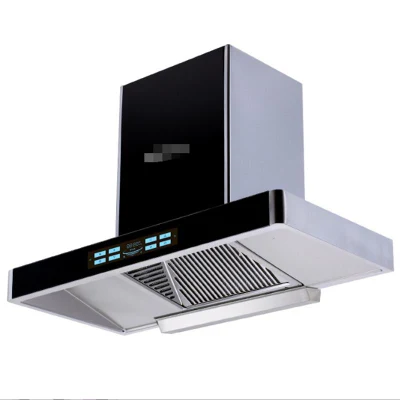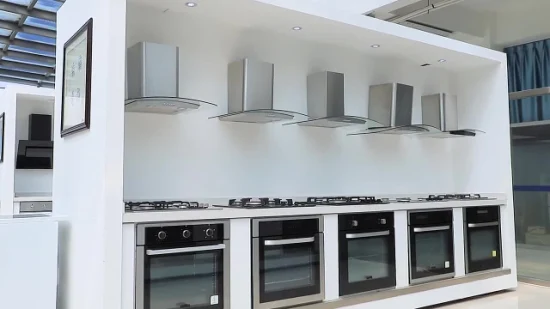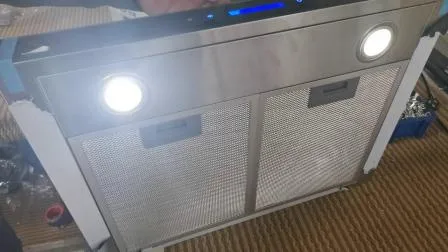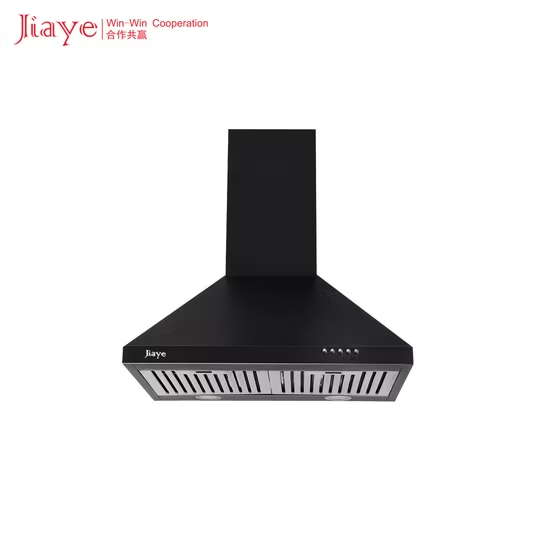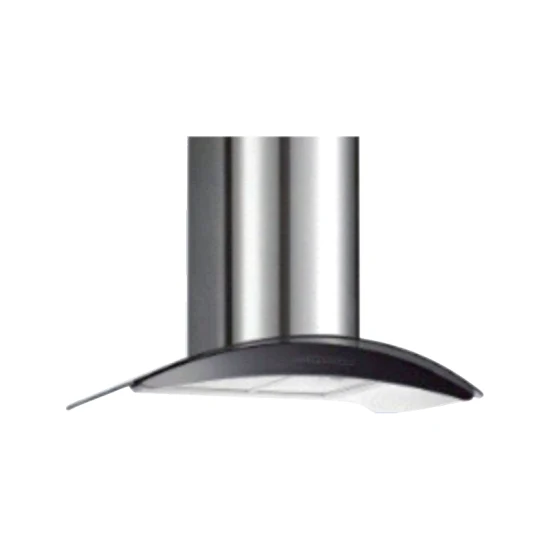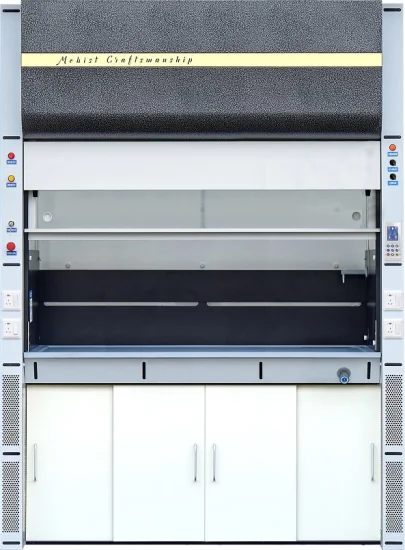
Acid & Alkali Resistant Exhaust PLC Control Fume Hood in Chemistry Lab
Description
Basic Info.
| Model NO. | WZ-1500A /B; WZ-1800A / B |
| Feature | Corrosion Resistance, Heat Resistant, Acid & Alkali Resistant, Fireproof, Explosion Proof |
| Hood Type | Floor Mounted |
| Color | Grey |
| Customized | Customized |
| Condition | New |
| Airfoil | Ceramic Fiber |
| Work Surface | Ceramic |
| Liner Material | Ceramic Fiber |
| Interior Baffle | Ceramic |
| Sash | Tempered Glass |
| Product Name | Fume Cupboard |
| Transport Package | Standard Export Wooden Case Packing |
| Specification | 1500 / 1800*1205*2400(mm) |
| Trademark | Ample |
| Origin | Chengdu, China |
| HS Code | 8414809090 |
| Production Capacity | 100 Set/Month |
Packaging & Delivery
Package Size 1900.00cm * 900.00cm * 2100.00cm Package Gross Weight 500.000kgProduct Description
1. Product DescriptionProduct features:
1. Easy to assemble; Anti-corrosion and high temperature resistance;2. Unique down return air, timely and effectively exhaust without residual;3. Special flow-equalized design makes the flow even without any blind angle;4. The internal visual range will not form condensate due to temperature difference, therefore no drip will form;5. The internal airflow direction is not affected by the volume of the exhaust air, thus will not cause turbulence;6. Low energy consumption, easy to operate;7. Has air compensation channel and connection, saves energy, comfortable;8. Drainage will not be limited by the height of the drain,since it has pump to lift the sewage;;
Product function:1. Exhaust waste gas;2. New air compensation;3. Inorganic exhaust gas purification;4. Sewage treatment function (Acid and alkali neutralization);5. All electrical and mechanical devices can start and stop independently;6. Purification system resistance monitoring: auto-alarm when the set value is exceeded;7. Purification system temperature monitoring: auto-alarm when the set value is exceeded, and automatically cut offthe outlet power;8. Auto-monitoring the level of acid, alkali and spray media;9. Manual add acid and alkali (via dosing pump);10. Manual discharge of sewage (via sewage pump) and cleaning of spray system (via spray pump);11. Auto-replenishment of tap-water (via feed-water valve);12. Provide safe power supply (including phase-out and phase-sequence protection, Emergency power cuts, Leakage protection,Main power control;13. Safe light source (including adjustable white and non-UV yellow LED lights), external isolate installation;14. Water shortage protection for sewage pump and spray pump; 15. Overheat protection for mechanical andelectrical equipment;16. Alarm when sliding door in extra high position;17. The exhaust air volume is controlled by electric regulating valve;18. Other functions: water supply terminal, gas supply terminal and other experimental equipment can be installed according tocustomers' demands.2. Product Parameters
| Model Specification | WJ-1500A | WJ-1500B | WJ-1800A | WJ-1800B |
| External dimensions of equipment(mm) | 1500(W)*1205 (D) *2400 (H) | 1800(W)*1205 (D) *2400 (H) | ||
| Dimension of works pace (mm) | 1260(W1)*780(D1) *1100 (H1) | 1560(W1)*780(D1) *1100 (H1) | ||
| Panel material | 20+6mm thick butterfly ceramics | |||
| Material of internal lining board | 5mm thick ceramic fiber board | |||
| Diversion structure | Lower air return | |||
| Control system | Button control panel (LCD panel) | |||
| PH value control | The medium is alkaline water solution; manual monitoring, and manual control through acid pump and alkali pump. | |||
| Input power | Three-phase five-wire 380V/50A | |||
| Current for air fan | Not over 2.8A(380V or 220V can be directly connected) | |||
| Maximum load of socket | 12 KW(total of 4 sockets) | |||
| Water tap | 1 set (remote control valve + water nozzle) | No | 1 set (remote control valve + water nozzle) | No |
| Water discharge way | Magnetic chemical pump strong discharge | |||
| Using environment | For non-explosion indoor use, within 0-40 degrees Celsius. | |||
| Applicable fields | Inorganic chemistry experiment; Food, medicine, electronics, environment, metallurgy, mining, etc. | |||
| Ways of Purification | Spray sodium hydroxide solution, no less than 8 cubic meters/hour | Spray sodium hydroxide solution.no less than 12 cubic meters/ hour | ||
| Ways of surface air speed control | Manual control (through the electric air valve to adjust the exhaust air volume or adjust the height of the moving door) | |||
| Average surface air speed | 0.6-0.8 m/s Exhaust air volume: 1420-1890m3/h (when door height h =500mm) | 0.6-0.8 m/s Exhaust air volume: 1760-2340m3/h (when door height h =500mm) | ||
| Speed deviation of surface air | Not higher than 10% | |||
| The average intensity of illumination | Not less than 700 Lux; Standard white and uv-free yellow LED lamps; The illumination is adjustable. | |||
| Noise | Within 55 decibels | |||
| Flow display | White smoke can pass through the exhaust outlet, no overflow. | |||
| Safety inspection | No spikes, edges; Charged body and the exposed metal resistance is greater than 2 mQ; Under 1500V voltage, no breakdown or flashover occurred for 1min test. | |||
| Resistance of exhaust cabinet | Less than 160 pa | |||
| Power consumption | Less than 1.0kw/h (excluding power consumption of fans and external instruments) | Less than 1.2kw/h (excluding power consumption of fans and external instruments) | ||
| Water consumption | Less than 3.2L/ h | Less than 4.0L/ h | ||
| Performance of wind compensation | With a unique wind compensation structure, the volume of the wind will not cause turbulence in exhaust cabinet and will not directly blow to the staff (need to connect to the air compensation system of the laboratory) | |||
| Air volume regulating valve | 315mm diameter flanged type anti-corrosion electric air flow regulating valve (electric contact actuator) | |||
General Lab Use: Conventional hoods found on Purdue's campus and are approved for general chemistry, radioisotopes, and carcinogen or toxic chemical work.
High Performance: These fume hoods have containment-enhancing features allowing them to operate at lower face velocities while protecting the operator. Since less room air is exhausted, energy is conserved. REM will tag high performance hoods with a special standard operating procedure sticker, informing users of the appropriate air velocity range determined by the University.
Perchloric Acid: Special hoods equipped with a stainless steel or PVC duct and properly timed water wash down system. The wash down system must be used following each use of the acid hood. Using perchloric acid in a general lab fume hood may cause the acid vapors to settle onto the ductwork and create explosive perchlorate crystals. Serious injury or fatality may result to hood users or maintenance staff if the acid crystals are exposed to vibration and detonate.
Polypropylene (Acid Resistant): Dilute acids may be used at room temperature in most fume hoods, but if you are performing acid digestion, heating, or working with concentrated acids such as: HF, Aqua Regia, Nitric Acid, Piranha Solutions, etc., acid resistant hood and ductwork is required. Strong acids are corrosive to the duct work found in general lab fume hoods. Fume hoods constructed from polypropylene material are long-lasting and designed to resist harsh chemicals for years.
Walk-In: Equipped with a floor-mounted design, walk-in hoods specialize in exhausting chemicals that are used alongside large laboratory equipment. When using a walk-in hood, close the bottom sash to the floor and only raise the top sash to REM's designated working height. Do not obstruct the area at the face of the hood.
Ductless Filtered: Designed to remove potential hazardous fumes and vapors from the work area as the exhausted air passes through absorbent material, such as activated charcoal. Occasionally, the REM department is asked to approve purchases of ductless, filtered fume hoods for use in research labs. We do not recommend ductless fume hoods. We do not believe ductless fume hoods provide reliable protection against chemical exposure, and think they may, in fact, give workers a false sense of security.4. Detailed Photo
5. FAQDoes my work require a fume hood?
Use of a chemical fume hood is required to enclose work involving toxic gasses, reactive or explosive materials, volatile chemicals, carcinogens, flammable chemicals, hazardous substances and processes producing aerosols or nuisance odors.
What's the difference between a ducted fume hood and a ductless exhaust hood?
Exhaust fume hoods vent air from the work area directly outside of the building by connecting to the facility's ducted exhaust system. Ductless exhaust, or stand-alone, fume hoods use integral blowers to draw air away from the work area through a set of filters before safely releasing the air back into the ambient lab. Ductless hoods commonly use a two-stage filtration system composed of a charcoal filter for vapor containment and a final HEPA filter for particle containment. Charcoal filters capture chemical vapors with varying degrees of efficiency; review your list of chemicals - along with solvent concentrations and aliquoted volumes - with your fume hood specialist to ensure the appropriate filter is purchased. Laboratory fume hoods are required to safely enclose chemicals, such as methanol, that are not captured efficiently by charcoal filtration. Small-footprint ductless fume hoods fit onto crowded benchtops or into areas of the lab without access to the facility exhaust system. The effectiveness of a ductless exhaust hood is contingent upon regular filter maintenance; talk to your hood specialist or EH&S representative to prepare a standard filter replacement schedule.Do I need a light duty chemical hood or a high-performance fume hood?
Although the primary purpose of a laboratory fume hood is operator safety, demand has increased for hoods designed to carry lower operating costs and reduced environmental impact. As fume hoods consume an average of 70,000 cubic feet of pre-conditioned air per hour, their operating costs are tied primarily to their air consumption, cited as volumetric rate (CFM) or face velocity (fpm). High-performance fume hoods - also called green ventilation hoods, high efficiency hoods or low-flow hoods - provide the highest level of containment at the lowest operating cost. High-performance fume hoods are designed to safely operate while maintaining a face velocity of 60 fpm, the lowest acceptable ASHRAE performance standard as outlined by SEFA. In addition to reduced face velocities, high efficiency fume hoods can integrate with Variable Air Volume (VAV) building automation systems to ensure minimum allowable room air changes, safe room pressurization and desirable temperature and humidity set points. A conventional light-duty, or by-pass, fume hood carries a lower up-front cost than a high-performance hood, but does not include design features allowing for reduced air volume ventilation or VAV integration. Most light-duty exhaust hoods safely operate at face velocities between 90 - 110 fpm, equal to an increase in air consumption of 30 - 50% annually. To decide between a light-duty chemical hood and a high-performance fume hood, a life cycle cost analysis is required to compare energy cost, ambient climate conditions and usage rate.Does my work require a benchtop fume hood, walk-in hood or canopy hood?
Bench top fume hoods are mounted on an existing work surface, or casework, to create a negative-pressure environment for fume containment. A walk-in fume hood, or floor-mounted hood, includes no work surface or cabinetry, allowing the user to place large items into the hood at floor level. A canopy fume hood is installed on the wall or suspended from the ceiling; it does not include a hood frame or physical barrier between the fume hood area and the ambient lab. Benchtop fume hoods are designed to enclose singular processes on a crowded benchtop, like small-scale solvent evaporation or ethanol extraction. Walk-in fume hoods can accommodate bulk storage systems, like 50-gallon drums, large processing equipment and heavy items transported by lab carts. Canopy exhaust hoods are designed to vent non-toxic materials like heat, steam and nuisance odors emanating from ovens, steam baths or autoclaves.Should I purchase a remote blower or dedicated, built-in blower with my lab fume hood?
Built-in blowers, or exhaust fans, are installed within the body of the fume hood and positioned above the work area. Remote exhaust blowers are installed on the building exterior and connect to the fume hood through a duct system. Built-in blowers are easier to install and less expensive, but can be noisy. As integral, built-in blowers can place sections of the ductwork under positive pressure, thus pushing contaminants through duct leaks back into the lab, they are recommended for non-hazardous applications, short duct runs, or mobile labs. Remote blowers, though more expensive and complex to install, can be sized for the specific situation, taking into account the duct diameter and run length and quantity of 90-degree or 45-degree elbow turns. Remote blowers keep the ductwork under constant negative pressure; any leaks in the duct system will draw air into the duct for exhaust from the building. Remote blowers include exhaust stacks and zero-pressure weather caps, ensuring the exhausted air is terminated at least 10 feet above the roofline to prevent fumes from returning to the building through the HVAC system.
Prev: Chemical Lab Acid & Alkali Resistant Explosion Proof Fume Hood with Heat Resistant
Next: Acid and Alkali Resistant Chemical Ductless Fume Hood for Laboratory
Our Contact


